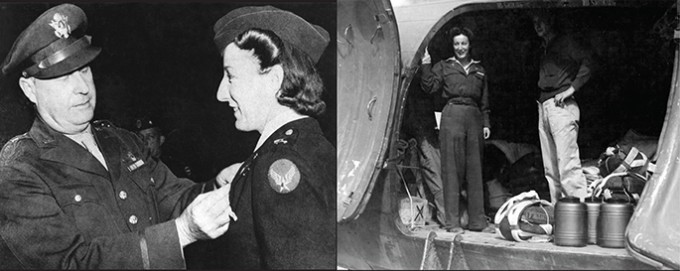Profiles In Nursing
Lt. Elsie Ott, RN (1913-2006), and the First Globe-Spanning Wartime Medevac
A WWII flight nurse takes a grueling, globe-spanning medical evacuation

She’d never even flown before, but in 1943, 2nd Lt. Elsie Ott, RN, became the U.S. Army’s first flight nurse, assigned to the first-ever intercontinental medical evacuation flight: a seven-day, 11,000-mile odyssey that took her and five patients from Karachi to Washington, D.C.
Rare Air
In the ‘30s and ‘40s, many Americans had never been on an airplane. Commercial air travel was less comfortable and vastly more expensive than traveling by ship or train. If you lived far from an airport or airfield, you might never have even seen a plane except in newsreels.
Born in Smithtown, Long Island, and trained at Lenox Hill Hospital School of Nursing in New York City, Elsie Ott was somewhat more cosmopolitan than many Americans who served during World War II. Even so, she remained a stranger to air travel even after joining the U.S. Army Nurse Corps in September 1941. When her unit, the 159th Station Hospital, transferred to Karachi (in what is now Pakistan) in February 1942, they traveled by sea.
Nevertheless, in early 1943, Ott was selected for an extremely ambitious assignment: the Army’s first intercontinental medical evacuation flight.
Healthcare on the Fly
Until the disastrous military setbacks in the Pacific forced the issue in 1941–42, the U.S. Army was surprisingly ambivalent about the idea of medical evacuation by air. There had been experiments with air ambulances since before WWI, but early setbacks had soured the Army brass’s enthusiasm. It wasn’t until October 1942 that the Army Air Forces (USAAF) attempted to launch the first training programs for flight surgeons and flight nurses at Bowman Army Air Field in Kentucky. Ott wasn’t part of this early program. In fact, it wouldn’t be until months later that she received any flight nurse training at all.












